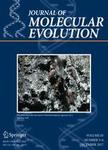版权所有:内蒙古大学图书馆 技术提供:维普资讯• 智图
内蒙古自治区呼和浩特市赛罕区大学西街235号 邮编: 010021

作者机构:Univ Rovira i Virgili Dept Engn Quim Tarragona Spain Univ Rovira i Virgili Dept Engn Informat & Matemat Tarragona Spain
出 版 物:《JOURNAL OF MOLECULAR EVOLUTION》 (分子演化杂志)
年 卷 期:2023年第91卷第6期
页 面:773-779页
核心收录:
学科分类:0710[理学-生物学] 07[理学] 09[农学] 071007[理学-遗传学] 0901[农学-作物学] 090102[农学-作物遗传育种]
基 金:Universitat Rovira i Virgili [2020PMF-PIPF-45, 2021PFR-URV-100] Agencia de Gestio d'Ajuts Universitaris i de Recerca [2021SGR-00111] Ministerio de Ciencia e Innovacion [PID2021-124139NB-C22, TED2021-129851B-I00]
主 题:Distance-based methods Neighbor-joining Polytomy Ties in proximity
摘 要:Results from phylogenetic analyses that study the evolution of species according to their biological characteristics are frequently structured as phylogenetic trees. One of the most widely used methods for reconstructing them is the distance-based method known as the neighbor-joining (NJ) algorithm. It is known that the NJ algorithm can produce different phylogenetic trees depending on the order of the taxa in the input matrix of evolutionary distances, because the method only yields bifurcating branches or dichotomies. According to this, results and conclusions published in articles that only calculate one of the possible dichotomic phylogenetic trees are somehow biased. We have generalized the formulas used in the NJ algorithm to cope with Multifurcating branches or polytomies, and we have called this new variant of the method the multifurcating neighbor-joining (MFNJ) algorithm. Instead of the dichotomic phylogenetic trees reconstructed by the NJ algorithm, the MFNJ algorithm produces polytomic phylogenetic trees. The main advantage of using the MFNJ algorithm is that only one phylogenetic tree can be obtained, which makes the experimental section of any study completely reproducible and unbiased to external issues such as the input order of taxa.